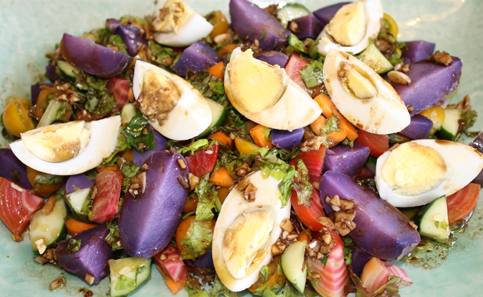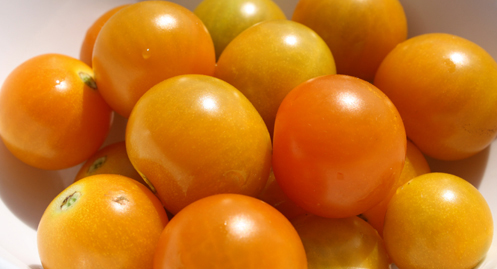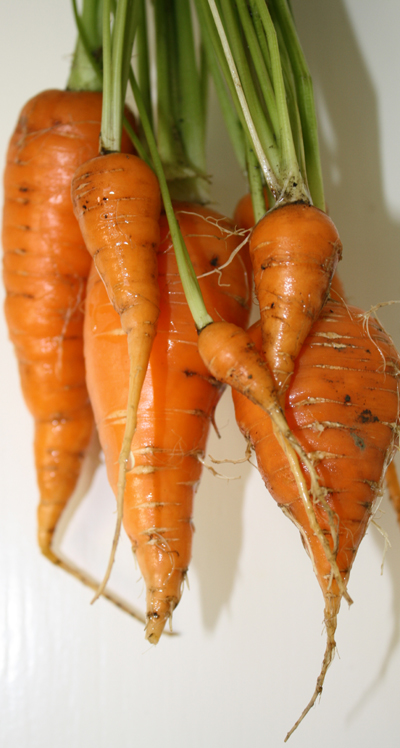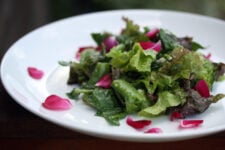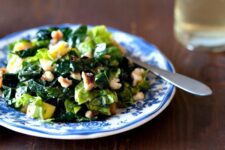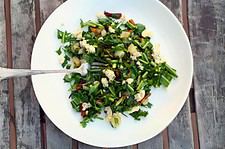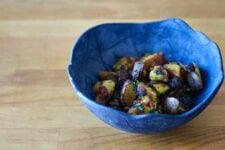This organic garden salad with blue potatoes and eggs is a great example of how I am eating these days. I love salads like this because they are so nutritious and so beautiful. I grew all the veggies except the blue potatoes in my organic garden. The potatoes came from a local farm; I’m definitely planting potatoes next year, though.
If you don’t have a garden, that’s perfectly ok. You can find everything for this salad at your local farmer’s market or your favorite spot for fresh produce. No blue potatoes? No problem. Just substitute small red potatoes instead, or leave out the potatoes entirely.
Don’t want to use egg? That’s fine, too. I like having hard-boiled eggs around for snacks and to use as an inexpensive protein in salads (I always use organic, free-range eggs). If you eat meat/fish, you could top your salad with some organic cooked meat or wild fish instead, or you if you are vegan, boost the protein with beans and/or some nuts or seeds.
Organic Garden Salad with Blue Potatoes and Eggs
2-3 cups mixed salad greens or leaf lettuce, chopped into small pieces
1 medium carrot, peeled if not organic, and chopped into small pieces
1 medium cucumber, peeled if not organic, and chopped into small pieces
15-20 cherry tomatoes, cut in half
2 large beets, rinsed to remove all dirt
6 small blue potatoes, rinsed to remove all dirt
2-3 hard-boiled eggs, peeled and sliced into wedges
Course sea salt to taste
Boil a small pot of water and add the beets and potatoes. Cook for 30-40 minutes, until the vegetables are soft when pierced with a fork. Pour off the water and allow to cool.
While the beets and potatoes are boiling, place the rest of the chopped vegetables in a large bowl and mix well. Season with some course sea salt and mix again.
When the beets are cooked and cool enough to handle, peel off and discard the skins. Chop into small pieces and add to the other vegetables. Slice the potatoes into wedges. Chop all but 6-8 of the wedges into smaller pieces and add to the other vegetables. Set the 6-8 potato wedges aside with the hard-boiled eggs. Make the simple garlic vinaigrette dressing.
Simple Garlic Vinaigrette
This is a very “garlic-y” dressing. If you don’t love garlic, use a smaller clove or omit entirely.
1 large clove of garlic
2 Tb. olive oil
1 Tb. balsamic vinegar
Peel the garlic and using the side of a large knife, smash the garlic. Mince very fine and set aside. In a small bowl, mix the oil and vinegar together with a fork. Add the garlic and mix well.
To assemble the salad, spoon the chopped vegetables onto a large plate. Arrange the potato and egg wedges decoratively on top of the salad. Drizzle the dressing over the salad. Season again with course sea salt to taste. Serves 2-4.
Related posts I think you will enjoy:
More Healthy Salad Recipes From Healthy Green Lifestyle
Tomato Cucumber and Radish Salad from Kalyn’s Kitchen
Purple Potato Cauliflower Soup from Ceramic Canvas

